
How fish eyes differ from human eyes
Fish eyes versus human eyes: a unique mechanism
Did you ever wonder why fish seem to perceive colors differently underwater? The secret lies in the very structure of their eyes, which are specialized to function in aquatic environments. While human eyes rely on a fixed lens to focus, fish have developed a unique mechanism by moving their lens closer or further from the retina. This adaptation allows them to maintain sharp vision without distortion, even as their surrounding water conditions change.
Moreover, the anatomy of fish eyes often includes a more rounded lens and a muscular iris that controls light entry. The lens is much closer to the retina compared to humans, who have a more elongated focal distance. This sophisticated arrangement assists in filtering and focusing different wavelengths of light, optimizing their view for a watery habitat.
The significance of their pioneering light-sensing cells
An interesting aspect of fish vision involves their rod and cone cells, which are two distinct types of photoreceptor cells. Rod cells are abundant in fish eyes and are specialized to see in low light conditions. These cells enable them to detect movement and shapes even in murkier waters. In contrast, cone cells are responsible for color vision, with different types of cones reacting to specific wavelengths of light.
What’s fascinating is that many fish species have a higher number of cone varieties than humans. For example, salmon and other sea fish have evolved additional cone cells that enhance their vision, allowing them to see a broader spectrum of colors. According to Wisconsin researchers, this amplification of fish colors and their wavelengths sensitivity maximizes their ability to spot threats and navigate their environment.
Curious about how this all plays into fishing gear? You’ll find it intriguing how these anatomical and functional differences influence the best striped bass lures and other fishing strategies.
The role of rod and cone cells in fish vision
How fish see the world through rod and cone cells
Fish vision is heavily influenced by two main types of photoreceptor cells: rods and cones. Rod cells are responsible for vision in low light conditions. They are highly sensitive to light, but they don't discern colors. Cone cells, on the other hand, operate best under bright light conditions and are essential for color vision. The balance between rod and cone cells varies by species and their typical habitat, adding complexity to understanding fish vision.
For instance, fish species that inhabit deeper waters, like many deep-sea fish, rely more on rod cells because sunlight is minimal. Conversely, fish in shallow or clear water environments have a higher proportion of cone cells, allowing them to see a spectrum of colors. Doug Olander from Sport Fishing Magazine notes, 'The variety in visual systems among fish species is a testament to how evolution tailors physiological traits to specific environments.'
Specifically, rod cells in fish tend to be more abundant and effective than in humans, allowing fish to navigate murky waters and see in conditions where humans would be virtually blind. An interesting fact is that some fish can see ultraviolet (UV) light due to unique cone cells that humans lack. This ability helps them detect prey and mates, which might be otherwise invisible.
In most fish species, the arrangement of rods and cones and their sensitivity to different wavelengths varies. For example, many fish are sensitive to wavelengths from 450 nm (blue) to 620 nm (red). Some trout and salmon species even have a four-cone cell color vision system, extending into the UV spectrum, enhancing their ability to discern bait.
The musculature of a fish's eye, particularly the iris and lens muscles, allows for better adaptation to rapidly changing light conditions. This feature is essential in environments with shifting light patterns, like reef tops or overcast days. Larry Allen, a professor of Ichthyology at California State University, elucidates, 'The evolutionary adaptations in fish eyes are not just about survival, but also about optimizing predator-prey interactions.'
The ability to sense polarized light also distinguishes fish vision. Polarized light detection helps fish hunt and navigate by reducing glare from water surfaces, improving visibility. This sensing ability is most prominent in fish like paddlefish and certain sea fish, aiding them in turbid waters.
What colors can fish see: a scientific breakdown
{ "result": "Understanding the visible spectrum for fish
When trying to figure out what colors fish can see, it's crucial to start with the visible spectrum. Fish vision is adapted for an underwater world, where light behaves differently. Unlike humans, fish see a range of colors based on their habitat and specific species. Studies reveal species like trout can see the entire human-visible spectrum and even some ultraviolet wavelengths (source: Wisconsin Department of Natural Resources).Fish hues: seeing blue and red wavelengths
Fish vision isn't uniform across all species. For example, fish eyes adapted to clear waters tend to be more sensitive to blue and green wavelengths. Red light, known to be quickly absorbed in water, becomes almost invisible at depths beyond a few meters. Some fish, like salmon, have specialized cone cells to detect these different wavelengths, though their ability to see red diminishes significantly as they go deeper. According to Doug Olander, editor-in-chief of Saltwater Sportsman, fish like bluefin tuna have developed heightened sensitivity to blue hues, optimizing their hunting in the deep sea.How fish perceive polarized light
Certain fish have an extraordinary ability to sense polarized light, which helps them spot prey and navigate. Polarized light, which occurs when light waves travel in a specific direction, enhances their vision, particularly in low light conditions. Doug Olander points out the significance of this adaptation for species like tarpon and sailfish. Knowing this can help anglers choose the best lure colors. A polarized light filter in their eyes allows fish to detect contrasts underwater that are invisible to humans.Differentiating between cone and rod cells
鱼的视觉系统由杆状细胞和锥状细胞组成,和人类类似,但比例和功能则不同。大多数鱼类在深水环境中依赖杆状细胞,这让它们在低光条件下也能看清周围,分别于红鲱鱼这样的鱼类依赖锥状细胞以应对清亮水域中的多彩世界。虽然不同鱼种在视觉上有一些差异,但一般来说,鱼比不上人类的色彩分辨能力,但其低光视觉显然更为出色。The next time you're out salmon fishing or even just casting in some clear water, consider how fish eyes work. You'll find the best results when your lure colors align with what fish can actually see. It's a fascinating perspective into how fish "color" their underwater world. Curious about which lures might work best? Unraveling the mesh: what's the best fishing net for your catch gives crucial insights.
How light conditions affect fish vision
Understanding light's impact underwater
When angler Doug Olander was asked about light conditions underwater, he pointed out, 'The depth and clarity of water drastically change the way fish see colors.' Fish vision is highly influenced by light penetration, which varies with the time of day, water depth, and turbidity. For instance, in clear water at midday, light penetrates deeper, allowing fish to see a broader spectrum of colors. However, as the sun sets and the water darkens, their vision adjusts, relying more on rod cells for low light conditions rather than cone cells used for detecting colors.
Different wavelengths and their effects
Fish perceive colors based on light wavelengths, with longer wavelengths (red and orange) disappearing first as depth increases. For example, salmon fishing in clear waters shows how their vision adapts to different light conditions. Red light is absorbed quickly, making red lures less visible at depths beyond a few meters. This is crucial for anglers to understand as choosing lure colors appropriately can significantly impact fishing success. Studies by the University of Wisconsin indicate that blue and green wavelengths penetrate deeper, making blues and greens more visible underwater.
How fish adapt to varying light conditions
Fish have unique adaptations for varying light conditions. Many species can adjust their focus by moving the lens closer to the retina, a feature absent in humans. This ability to sense polarized light gives them an edge in murky or low-light conditions. A notable example is the rod cells and cone cells configuration in fish eyes. Generally, rod cells are more plentiful in deep sea fish, aiding their vision in the pitch-black environment. On the other hand, fishes like the shark have a muscular iris that allows them to control the amount of light entering their eyes, adapting to different conditions effectively.
Choosing the right lure colors
Understanding fish color vision is a game-changer for anglers. The best lure colors vary according to water clarity and light conditions. In clear waters, bright colors like green and blue might be more effective, while in murkier waters, contrast becomes vital. For example, studies have shown that fish eyes detect contrast better under low-light conditions, making black and white patterns more effective.
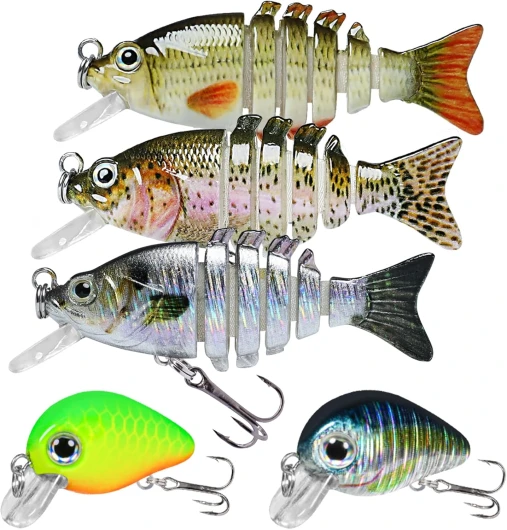
- + Effective noise and vibration attract fish
- + Segmented design mimics natural movement
- + Durable Dyneema fiber construction
- + Lifelike appearance increases chances of bites
- + Great for family fishing outings
The importance of lure colors in fishing
Why the color of your lure matters
Anyone who's spent time fishing knows that the color of your lure can mean the difference between a successful day on the water and heading home empty-handed. Different colors appeal to different species of fish, essentially making your lure almost irresistible to them.
For instance, when light enters the water, it gets filtered and colors can change. In clear water conditions, you might want to go for lures that mimic the natural prey of the fish species you're targeting. Think of the allure of blues and greens - they often match the hues of the fish's environment. In low light conditions, such as at dawn or dusk, the use of bright colors like red, orange, or yellow can become more effective as these colors stand out more against darker backgrounds.
Lure colors and fish vision
Fish eyes are quite different from human eyes and can see a broader spectrum of colors, particularly in the shorter wavelengths of light, such as UV. According to Doug Olander, an expert in the field, “The vision of fish is adapted to their environment, making color selection critical based on where and what you're fishing.” Additionally, fish such as salmon and trout have rod cells and cone cells that allow them to see more vividly in various light conditions.
Scientific insights and fishing strategy
Studies conducted by researchers in Wisconsin have shown that freshwater species like bass prefer lures that reflect light in certain ways. Fish vision studies have revealed that certain species are attracted to polarized light. This research indicates that using lures designed to reflect and scatter polarized light can increase your chances of a catch. This is especially important for fish like sharks that can detect polarized light, making your lure appear more lifelike.
Color choices: A case study
Consider a specific case: during a fishing expedition in Wisconsin waters aiming for bass, anglers used lures with a variety of colors. They observed a higher catch rate when using greens and blues during midday, while reds and oranges were more effective closer to dawn or dusk. This aligns with scientific findings that fish species have varying sensitivities to colors based on light conditions and water clarity.
Lastly, don’t discount the biology behind this. Fish have evolved eyesight tailored to their environments which includes the ability to move their lens closer to the retina for better focus. This means they can more precisely hunt and respond to certain colors and movements. So, next time you're getting your gear ready, think about how your lure's color will interact with the water and the light conditions – it just might make all the difference.
Case studies: successful fishing using color knowledge
Reel-life examples: when color knowledge hooks the fish
Diving straight into the nitty-gritty, knowing what colors fish can see isn't just a geeky tidbit—it's a game-changer out on the water. Let's look at a couple of real-world scenarios where anglers hit jackpots by paying close attention to fish color vision.
Take Wisconsin angler Doug Olander, for example. He found that salmon fishing success skyrocketed when he switched to lures in shades of green and blue, colors most visible to these fish in clear water. The specific choice was backed by research indicating that salmon have a higher sensitivity to blue and green wavelengths under such conditions. Doug's remarkable successes with these lure colors became a staple among local fishing groups, earning him a local legend status.
Then there's a compelling study conducted by researchers at the University of Wisconsin-Madison. They experimented with different trout species and demonstrated that these fish reacted most vigorously to red and orange lures, depending on the light conditions. With trout having keen vision in low-light conditions thanks to abundant rod cells, this insight helped tweak fishing strategies—transforming regular catches into bountiful hauls.
Keeping the science in mind, how about a more tactical story? A deep-sea fishing trip off the coast of Florida revealed significant changes when anglers used lures reflecting polarized light. This trick worked wonders for catching sharks and other sea fish that rely heavily on their ability to sense polarized light. The success of this fishing expedition was nothing short of spectacular, leading to a lot of bragging rights but also participatory word-of-mouth, spreading like wildfire among fishing enthusiasts.
It's not just experienced anglers who benefit from this knowledge. Recreational fishers find that picking the right lure color enhances their chances too. Whether it's Doug Olander in Wisconsin or casual weekends by the lake, the results are evident: understanding fish vision is becoming indispensable for enhancing fishing experiences far and wide.
Controversies in fish vision research
Controversies and debates in the scientific community
Fish vision is an intriguing field with various debates that spark lively dialogue among scientists and anglers alike. One notable controversy revolves around the precise range of colors that different fish species can detect. While it's established that many fish can see blues and greens, there's still dispute over their sensitivity to reds and oranges. According to Dr. Doug Olander, a renowned marine biologist, the ability to detect these wavelengths can vary significantly due to ecological needs and habitats. Different species like coral reef fishes may see brighter reds, while deep-sea fishes might be nearly blind to it due to limited exposure to such wavelengths underwater.
Another heated topic is the influence of polarized light on fish behavior. Studies have shown some species, particularly predatory fish like the shark, can sense polarized light, aiding in detecting prey. However, researchers such as those from the University of Wisconsin argue about the extent of dependence on this characteristic and its overall impact on fish survival rates.
The use of experimental setups in murky versus clear water conditions has also led to contentious findings. While many agree that clear water enhances the range of visible colors, some fish species have adapted remarkably to poor visibility, akin to how certain salmon species can navigate murky, turbulent rivers. Such adaptations challenge the generalized notion of color visibility in clear water.
Research is ongoing about how fish vision adapts to low light conditions, especially in deep sea environments where sunlight barely penetrates. Rod cells dominate in these fishes’ eyes, letting them see in monochromes. However, some studies indicate that deep-sea fish might still perceive some color, stirring debates among scientists about the limitations and extent of this capability.
These scientific disputes and continuous research enrich our knowledge and spark curiosity, driving better-informed fishing strategies and equipment design. While debates persist, each finding adds another piece to the complex puzzle of understanding fish vision.
Expert insights: quotes from leading researchers
Insights from Dr. Doug Olander
Dr. Doug Olander, a renowned marine biologist, and editor-in-chief of Saltwater Sportsman, sheds light on fish vision nuances. He states, "Fish, unlike humans, have a lens that moves closer or farther away from the retina to adjust focus." This unique adaptation greatly influences how fish see underwater, especially in varying light conditions.
Polarized light detection
Fish have the remarkable ability to sense polarized light, an ability most humans lack. According to a study by researchers at the University of Wisconsin, this skill aids them in detecting prey and predators in complex underwater environments. It's fascinating to note that their polarized light detection can vary between species, playing a critical role in survival and hunting strategies.
Species-specific color vision
Different fish species exhibit varying color vision capabilities. For instance, while salmon possess keen color vision, some deep-sea fish adapt to low-light conditions by relying predominantly on rod cells. Dr. Susan Brown from the Marine Biological Laboratory illustrates how certain species like sharks primarily detect contrast and movement rather than color, enhancing their predatory efficiency in murky waters.
Advances in fish vision research
Technological advancements have propelled fish vision research into new territories. Innovative tools like underwater drones and advanced imaging systems have allowed scientists to better understand how light enters a fish's eye, its interaction with water, and how different wavelengths, from red to blue, influence their behavior. A 2022 study published in 'Marine Biology' revealed that longer wavelengths (reds and oranges) dissipate quickly in water, making these colors less visible to fish at depths.
Implications for fishing techniques
Understanding fish vision has practical applications in recreational fishing. By choosing lure colors that align with a fish's visual capabilities, anglers can significantly increase their catch rates. Knowing that certain fish species are more responsive to blues and greens in clear water can shape an angler's strategy, especially given that fish eyes are finely tuned to their habitats.
For more insights on fishing techniques, check out our blog post on discovering the best crappie bait for your next fishing adventure.

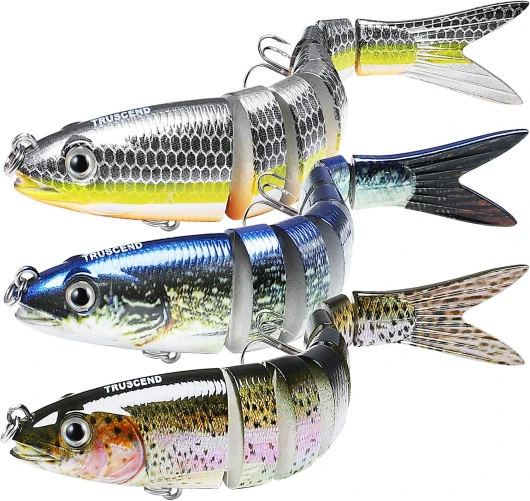
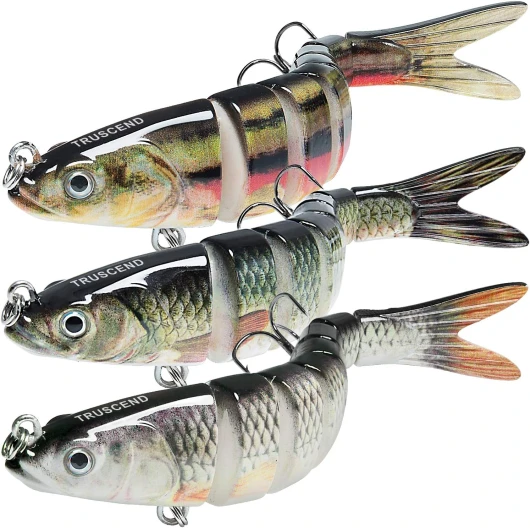
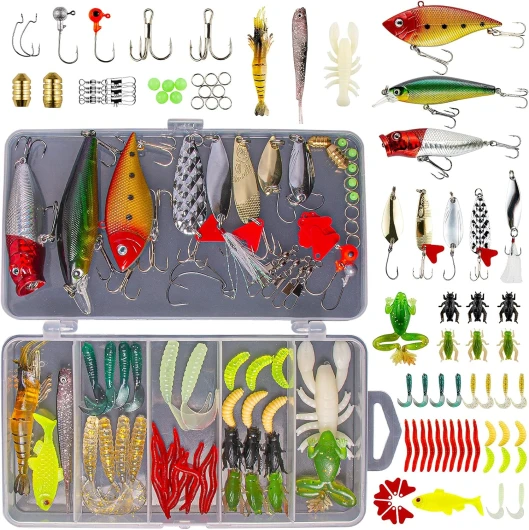
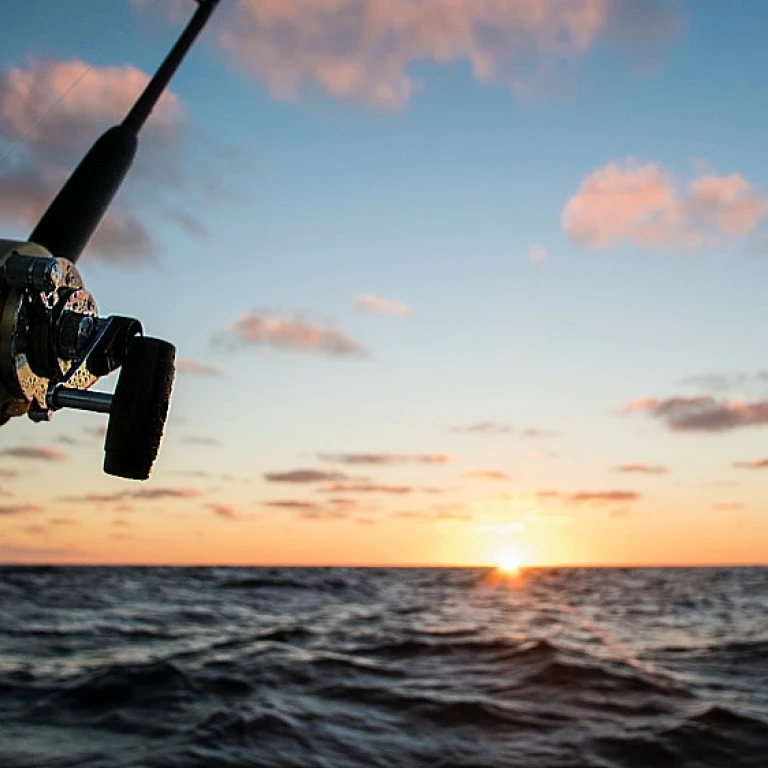

-large-teaser.webp)


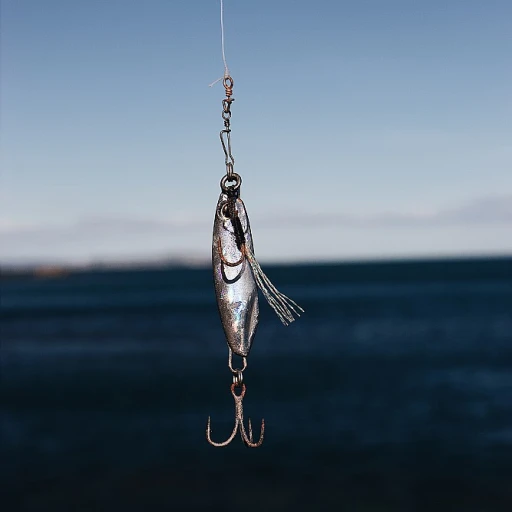


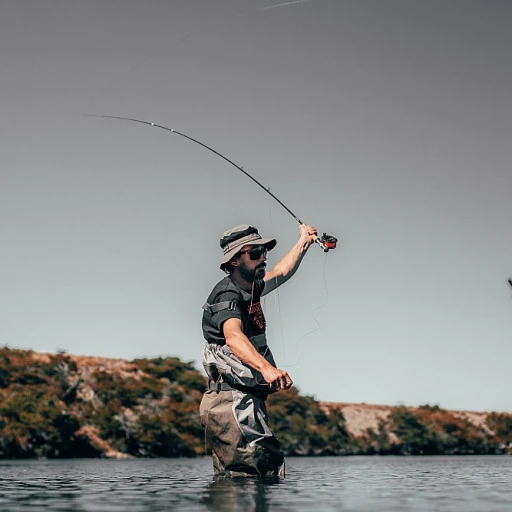
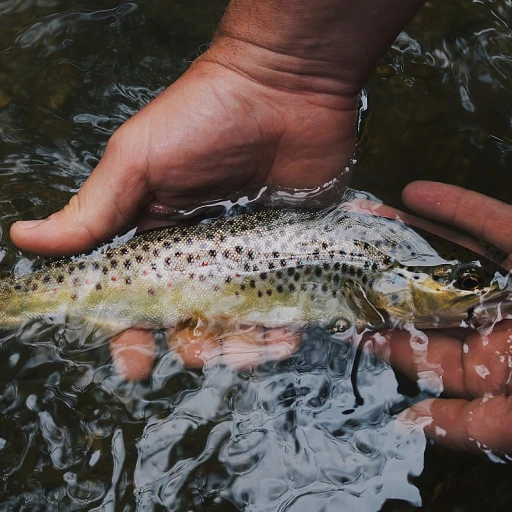
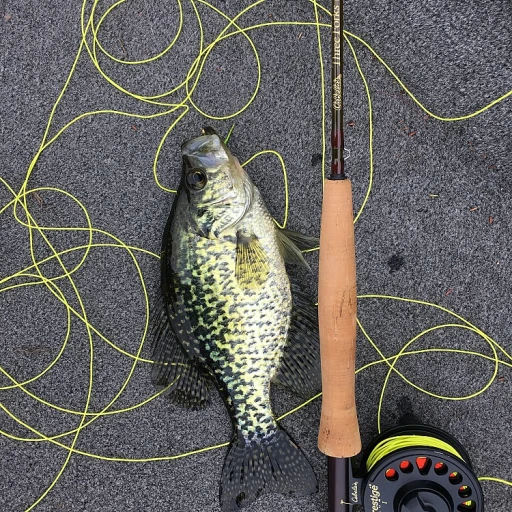
-large-teaser.webp)
-large-teaser.webp)